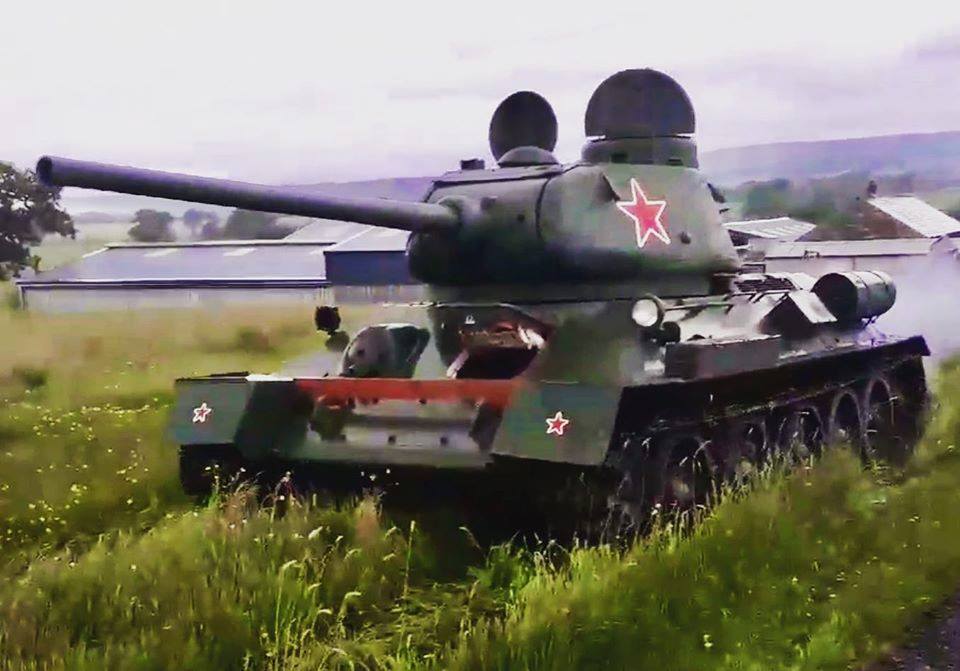Russia is preparing to commemorate the 79th anniversary of Victory Day on May 9 with a relatively modest parade. The spotlight will be on the iconic T-34-85 tank – once again.
Victory Day, celebrated nationwide in Russia on May 9, is an important public holiday that highlights the sacrifices of Soviet soldiers and civilians in defeating Nazi Germany.
The dress rehearsal on May 5 offered a glimpse of the scaled-down event, reflecting the nation’s ongoing focus on the conflict in Ukraine. The main ceremony, set to unfold on the capital’s main square, will feature over 9,000 participants, including troops and equipment.
The line of military vehicles will be headed by the legendary “Victory Tank,” the T-34-85, bringing to mind last year’s parade, where it was the sole tank to be showcased.
Following the T-34-85, a procession of modern armored vehicles will traverse Red Square, showcasing Russia’s military capabilities. The lineup includes Tiger, VPK-Ural, Typhoon-K armored vehicles, and BTR-82A armored personnel carriers.
The Yars mobile strategic missile systems, vital components of Russia’s nuclear defense, will also make an appearance. In addition to Yars, launchers of Iskander-M operational tactical missile systems and the S-400 anti-aircraft missile systems will also participate in the parade.

A notable addition to this year’s parade is the “Linza,” the latest protected ambulance armored vehicle designed to transport wounded personnel swiftly and safely. It will make its inaugural appearance in the parade. With its ability to reach speeds of up to 105 km/h and withstand bullets and shrapnel, the “Linza” represents a crucial advance in medical support on the battlefield.
Unlike the past two years, where aerial activity over the capital was notably absent, this year’s parade will include a display of aviation prowess.
The event will culminate with a flight by the Russian Knights and Swifts aviation groups, performing a unique aerobatic figure called the “Cuban Diamond.” Following this breathtaking display, six Su-25 attack aircraft will soar over Red Square, painting the sky in the colors of the Russian tricolor, adding a vibrant finale to the proceedings.
This spectacle is somewhat subdued compared to the elaborate displays Russia once orchestrated before the outbreak of the conflict in Ukraine in 2022. In 2021, before the conflict, a total of 76 aircraft participated in the parade.
Since last year, the Victory Day parade on May 9 has been conducted on a relatively low scale due to Moscow’s active involvement in the Ukraine war.
Russian media has argued that holding the scaled-back ceremony allows troops stationed on the front lines to remain undistracted, except for the coordinated participation of select units involved in the ceremony.
This scaling back also extends to military technology. The omission of modern tanks, infantry fighting vehicles, and self-propelled guns from the parade underscores the prioritization of resources for frontline operations.
T-34-85: A Symbol Of Victory
In the annals of military history, certain vehicles emerge not just as machines of war but as symbols of resilience, innovation, and victory. Among these legendary vehicles is the T-34-85, a formidable armored giant that entered service in the Red Army 80 years ago on January 23, 1944.
Crafted by the skilled engineers of the Urals Tank Factory No.183, under the guidance of General Designer Aleksandr Morozov, the tank remains an enduring testament to Soviet engineering prowess and strategic adaptation.
The T-34-85 was born from the crucible of conflict. Initially, the Soviet T-34 medium tank, armed with a 76mm gun, encountered severe challenges when facing the German Wehrmacht’s Tiger and Panthers tanks, particularly during the Battle of Kursk.
Recognizing the need for enhanced firepower and protection, the decision was made to upgrade the existing T-34 rather than embark on a new development, owing to constraints of time and resources.
The transformation began at the Design Bureau of the Urals Tank Factory No.183. Engineers embarked on a mission to outfit the T-34 with a more powerful 85mm gun, first with the D-5T gun and later the S-53 gun.

This upgrade equipped Soviet tanks with firepower at par with the German 88mm cannons. Accommodating the new cannon necessitated the construction of a redesigned turret, offering ample space for the crew while boosting armor protection.
With the turret armor reinforced to the thicknesses of 90mm at the front, 75mm at the sides, and 52mm at the rear, the T-34-85 gained resilience without sacrificing its agility and maneuverability.
These qualities, coupled with ease of manufacture and repair, solidified the tank’s reputation for reliability and versatility. From the outset, the T-34-85 distinguished itself on the battlefield, becoming an integral asset in key engagements of the Great Patriotic War (a term used in Russia and some other former republics of the Soviet Union to describe the conflict fought between June 22, 1941 and May 9, 1945, along the many fronts of the Eastern Front of World War II, primarily between the Soviet Union and Nazi Germany).
The tank played a crucial role in Operation Bagration for the liberation of Byelorussia and participated in the assault-crossing of the Dnieper, as well as the Vistula-Oder and Berlin operations.
A total of 16,000 T-34-85 vehicles rolled off the assembly lines by the war’s end. Although mass production ceased post-war, its legacy endured as the tank found new life under license production in Poland and Czechoslovakia throughout the 1950s.
The tank participated in conflicts across the latter half of the 20th century and remained in service in various nations well into the early 2000s. Today, the tank stands as a revered artifact, prominently displayed in museums worldwide and immortalized as monuments in parks and city streets.
It holds a place of honor in Victory Day parades, leading the procession of heavy vehicles as a tangible symbol of “Victory” over adversity.
- Contact the author at ashishmichel(at)gmail.com
- Follow EurAsian Times on Google News





